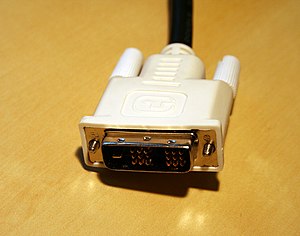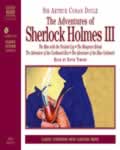The
Second Opium War or
Arrow War was a war of the
United Kingdom and
France against the
Qing Dynasty of
China from
1856 to
1860.
Background The war may be viewed as a continuation of the
First Opium War (
1839-
1842), thus the title of the Second Opium War.
On
1856-
10-08, Qing officials boarded the
Arrow, a Chinese-owned ship that had been registered in
Hong Kong and was suspected of
piracy and
smuggling. Twelve Chinese subjects were arrested and imprisoned. The British officials in
Guangzhou demanded the release of the sailors, claiming that because the ship had recently been British-registered, it was protected under the Treaty of Nanjing. Only when this was shown to be a weak argument did the British insist that the
Arrow had been flying a
British ensign and that the Qing soldiers had insulted the flag. Faced with fighting the
Taiping Rebellion, the Qing government was in no position to resist the West militarily. This has come to be known as the "Arrow Incident".
The
British Parliament decided to seek redress from China based on the report about the "Arrow Incident" submitted by
Harry Parkes, British Consul to Guangzhou. France, the USA, and
Russia received requests from Britain to form an alliance. France joined the British action against China, prompted by the execution of a French
missionary, Father
August Chapdelaine ("Father Chapdelaine Incident"), by Chinese local authorities in Guangxi province. The USA and Russia sent envoys to Hong Kong to offer help to the British and French, though in the end they sent no military aid.
The British and the French joined forces under Admiral Sir
Michael Seymour. The British army led by
Lord Elgin, and the French army led by
Gros, attacked and occupied Guangzhou in late 1857. Ye Mingchen was captured, and
Bo-gui, the governor of Guangdong, surrendered. A joint committee of the Alliance was formed. Bo-gui remained at his original post in order to maintain order on behalf of the victors. The British-French Alliance maintained control of Guangzhou for nearly four years. Ye Mingchen was exiled to
Calcutta,
India, where he starved himself to death.
The coalition then cruised north to briefly capture the
Taku Forts near
Tianjin in May, 1858.
 Outbreak
Outbreak In June 1858 the first part of the war ended with the
Treaties of Tianjin, to which France, Russia, and the
United States were party. These treaties opened eleven more ports to Western trade. The Chinese initially refused to ratify the treaties.
The major points of the treaty were:
Britain, France, Russia, and the United States would have the right to establish diplomatic
legations (small embassies) in
Peking (a closed city at the time)
Ten more Chinese ports would be opened for foreign trade, including
Niuzhuang,
Danshui,
Hankou, and
Nanjing The right of all foreign vessels including commercial ships to navigate freely on the
Yangtze River The right of foreigners to travel in the internal regions of China, which had been formerly banned
China was to pay an indemnity to Britain and France in 2 million
taels of silver each
China was to pay compensation to British merchants in 2 million taels of silver for destruction of their property
Treaty of Aigun In June 1858, shortly after the Qing Court agreed to the humiliating treaties, more hawkish ministers prevailed upon the Xianfeng Emperor to resist encroachment by the West. On June 2, 1858, the Xianfeng Emperor ordered the Mongolian general
Sengge Rinchen to guard the Dagu Fort in Tianjin. Sengge Richen reinforced the Dagu Forts with added artillery. He also brought 4,000 Mongolian cavalry from Chahar and Suiyuan.
In June, 1859, a British naval force with 2,200 troops and 21 ships, under the command of Admiral Sir
James Hope sailed north from Shanghai to Tianjin with newly-appointed Anglo-French envoys for the embassies in Beijing. They sailed to the mouth of the
Hai River guarded by the Dagu Fort near Tianjin and demanded to continue inland to Beijing. Sengge Rinchen replied that the Anglo-French envoys may land up the coast at Beitang and proceed to Beijing but refused to allow armed troops to accompany them to the Chinese capital. The Anglo-French forces insisted landing at Dagu instead of Beitang and escorting the envoy to Beijing. On the night of June 24, 1859, a small batch of British forces blew up iron obstacles that the Chinese had placed in the Baihe River. The next day, the British forces sought to forcibly sail into the river, and shelled Dagu Fort. They encountered fierce resistance from Singge Rinchen's positions. After one day and one night's fighting, four gunboats were lost and two others severely damaged. The convoy withdrew under the cover of fire from a naval squadron commanded by
Commodore Josiah Tattnall. Tattnall's intervention violated U.S. neutrality in China. For a time, anti-foreign resistance reached a crescendo within the Qing Court.
In the summer of 1860, a larger Anglo-French force (11,000 British, 6,700 French) with 173 ships sailed from Hong Kong and captured the port cities of
Yantai and
Dalian to seal the Bohai Gulf. Then they carried out a landing near at
Bei Tang(also spelled
Pei Tang), some 3 kilometres (2 mi) from the Dagu Fort on August 3, which they captured after three weeks' on
August 21. After taking Tienstin on
August 3, the Anglo-French forces marched inland toward Beijing. The Xianfeng Emperor then dispatched ministers to for peace talks, but relations broke down completely when a British diplomatic envoy,
Harry Parkes, was arrested during negotiations on September 18. He and his small entourage were imprisoned and tortured (some were murdered by the Chinese in a fashion that infuriated British leadership upon discovery in October). The Anglo-French invasion clashed with Singge Rinchen's Mongolian cavalry on September 18 near Zhangjiawan before proceeding toward the outskirts of Beijing for a decisive battle in
Tongzhou District. At
Baliqiao, Sengge Rinchen's 10,000 troops including elite Mongolian cavalry were completely annhilated after several doomed frontal charges against concentrated firepower of the Anglo-French forces, which entered Beijing on
October 6.
With the Qing army devastated, Emperor Xianfeng fled the capital, leaving his brother,
Prince Gong, to be in charge of negotiations. Xianfeng first fled to the
Summer Palace in
Chengde and then to
Jehol in
Manchuria., as it was his own father,
Thomas Bruce (1776–1841), who, from
1799 to
1803, removed from the
Acropolis in Greece what are now known as the
Elgin Marbles to Britain, where they remain to this day, a subject of rancor between the Greek and British governments.
Continuation of the war After the Xianfeng emperor and his entourage fled Beijing, the June 1858 Treaty of Tianjin was finally ratified by the emperor's brother, Yixin, the
Prince Gong, in the
Convention of Peking on
October 18,
1860, bringing The Second Opium War to an end.
The British, French and - thanks to the schemes of Ignatiev - the Russians were all granted a permanent diplomatic presence in
Beijing (something the Qing resisted to the very end as it suggested equality between China and the European powers). The Chinese had to pay 8 million taels to Britain and France. Britain acquired Kowloon (next to Hong Kong). The opium trade was legalized and
Christians were granted full
civil rights, including the
right to own property, and the right to
evangelize.
The content of the Convention of Peking included:
Two weeks later, Ignatiev convinced the Manchu to sign a "Supplementary Treaty of Peking", in which the Manchu signed away some 300,000 to 400,000 square miles (777,000–1,036,000 km²) of land to the Russians. The defeat of the Imperial army by a small Anglo-French military force (outnumbered at least 10 to 1 by the Manchu army) coupled with the flight (and subsequent death) of the Emperor and the burning of the Summer Palace was a shocking blow to the once powerful Qing Dynasty. "Beyond any doubt, by 1860 the ancient civilization that was China had been thoroughly defeated and humiliated by the West."
China's recognition of the validity of the Treaty of Tianjin
Opening Tianjin as a trade port
Cede No.1 District of
Kowloon (south of present day
Boundary Street) to Britain
Freedom of religion established in China
British ships were allowed to carry indentured Chinese to the Americas
Indemnity to Britain and France increasing to 8 million taels of silver a piece
Legalization of the opium trade
 Further reading Fraser, George MacDonald (1986). Flashman and the Dragon. New York, NY: Knopf. ISBN 0-394-55357-8.
Further reading Fraser, George MacDonald (1986). Flashman and the Dragon. New York, NY: Knopf. ISBN 0-394-55357-8. — A portion of the memoirs of the fictional
Harry Paget Flashman recounting his adventures during the Second Opium War and
Taiping Rebellion.



 Jahiliyya in Muslim Societies
Jahiliyya in Muslim Societies

 Notable parody
Notable parody
 History
History

 Synopsis
Synopsis Outbreak
Outbreak Further reading
Further reading Membership
Membership